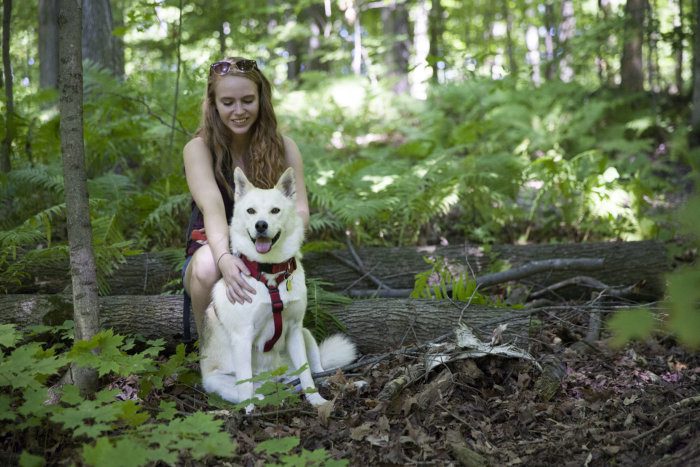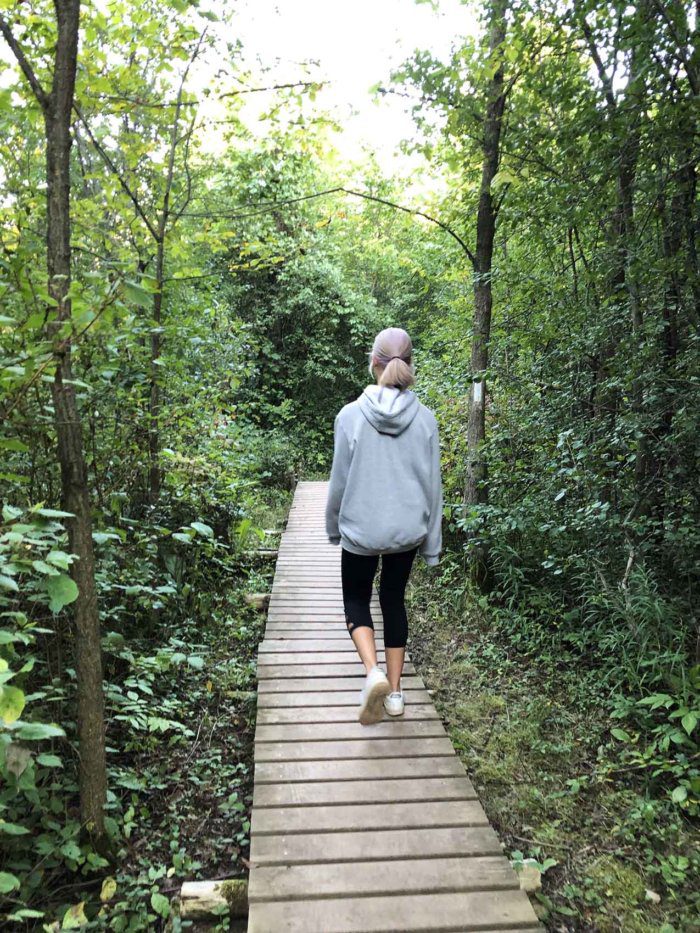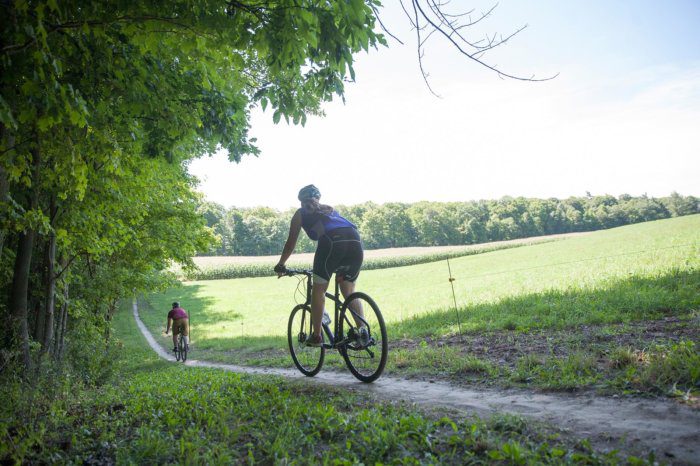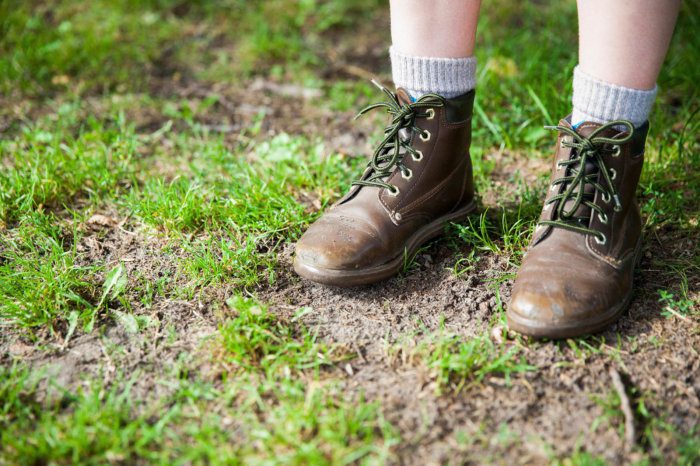Posted : June 26, 2020
Our blog is chock full of great ideas for fun things to see and do in York Durham and Headwaters. We are always adding new content and updating old posts, but sometimes you might stumble upon something from our vault. If this article has inspired you to hit the road, be sure to double-check that the featured stops in this post are still welcoming visitors.
Summer, glorious summer! The warm months are upon us, beckoning us out into the fresh air with sunny days and promises of family fun. After a spring spent indoors, distanced from friends and loved ones, we are chomping at the bit to get back to celebrating summer.

In many of our towns and cities here in York Durham Headwaters, outdoor public spaces are beginning to open back up to the public with cautious optimism. But many trails, unlike parks and other green spaces, never closed in the first place. They have remained open for people to enjoy, and for some users, they have been somewhat of a lifeline to a time before COVID. Lisa John-Mackenzie, tourism development coordinator for the Township of Uxbridge (the Trail Capital of Canada), knows this feeling well. “I live on the trails,” she says. “I use them multiple times a week for biking and for walking. It is one of the things that has been critical to our family through this difficult time.” But as Lisa notes, using the trails means running into other trail users as well. Because they are so popular, keeping our vast network of trails in top condition and using them in a responsible, respectful way, is imperative to making sure that they remain open for us to use.
With that in mind, if you decide to venture out into these beloved green spaces, there are things you need to know. We have put together a collection of “best practices” from our municipalities and park authorities for you to consider when planning your trail visit.
Stay home or close to home
First and foremost, the best rule of thumb to follow when considering trail usage is to not use them at all. There is no getting around the fact that the most effective safety measure to help flatten the curve is to stay home and explore your own neighbourhood. The less travel we have to do, the less we risk exposure to other people.
If you do happen to go out to explore the trails, be prepared to turn around. Trails and other green spaces can become crowded with all the people who want to enjoy them in this nice summer weather—especially with many parks still closed. If you see too many people or too many cars in the parking lot, you may want to consider another day, when it is quieter, to enjoy the trails.
Do your homework on your chosen trail
As we mentioned, our communities and public spaces are beginning to open up now, with many entering phase two of their approach to COVID containment. However, phase 2 means different things in different communities when it comes to trails. It is always a good idea to research what the requirements are for the trail you wish to enjoy before heading out.
Things like “pinch points,” where trails narrow to less than 2 metres are good to know ahead of time so that you can either avoid them, or be prepared for their coming up—especially since many trails don’t mark these narrow sections.

If you are generally unfamiliar with a particular trail, reach out to someone in-the-know. This may be an expert in your area, but can also be trail supports, or the administration or management office for the space or municipality. If you cannot find adequate information on the trail you wish to use, consider venturing out on another one that has more reliable information to ensure that you remain safe.
Be vigilant about social distancing
As with any public space, the rules and etiquette on social distancing hold for trails. To limit the spread of COVID-19, it is always advisable to visit the trails with members of your household only.
Stay on the trails… however, when passing other trail users, step as far to the side as possible to maintain social distancing. If you are passing a “pinch point” that we mentioned above—unless otherwise noted when you did your pre-trail research—you may be allowed to step off the trail very briefly, only to facilitate passing at two metres, or six feet.
It is important to not gather, especially at trail heads, if you run into someone you know. As social creatures, it is a natural desire for us humans to greet and catch up with old friends. But creating gatherings of people makes it more difficult for other trail users to pass you—especially if you are maintaining two metres of space from the friends you have run into.
Keep your dog on a leash. This is always a general requirement, though unfortunately it is one that is often disregarded. But think of this: if your dog takes off in a burst of excitement to sniff and explore, you will have to chase it. Which means you might need to approach another trail user to retrieve your furry friend. Also, remember that pets can carry and spread COVID-19, too. Ensure that your pet is physically distancing as well.

Leave nothing
Obviously “don’t litter” is an anytime observance, but in times of COVID-19 it holds a particularly important place in our social distancing guidelines. After all, your hands touch your trash. Littering may tempt community-minded citizens to pick up after you in an effort to keep green spaces lovely—which means they touch whatever you have touched. Even if you place your trash in the appropriate receptacles, there are park or city employees that have to empty garbage bins, which in turn increases their risk of exposure.
This is why it is best to take home all garbage with you, whether it be granola bar wrappers, sandwich bags, or anything else you might want to throw away. Wherever possible, use reusable drinking containers and food packaging like Tupperware and water bottles. You’re not only helping to flatten the curve this way, you’re also being kind to our environment.
Of note, taking home trash means pet waste as well. In these times of vigilance, the saying is now “poop, scoop and remove.” Yes, we recognize that it is not the most pleasant experience to pack up your pet’s waste, but it goes a long way to keeping ourselves and our loved ones safe and healthy.
And finally… no smoking. Cigarettes go in the mouth. Need we say more?
Stay sanitized and prepare for a washroom-less visit
It is no surprise that sanitizing and washrooms go hand-in-hand… pardon the pun. We are all encouraged to sanitize our hands before and after leaving the trails so that we come clean, and go home clean. But even if we are avoiding touching our faces, or touching anything else in the park, washrooms present a significant challenge. For this reason, it is important to sanitize your hands before and after leaving the washroom to reduce what unseen pathogens may be transferred to and from surfaces like taps, door handles and stall doors.
If someone is using the washroom, it is advisable to consider waiting outside until they are done to limit the number of people in an enclosed space. Wear a mask, and if it’s possible, you may even want to plan a shorter trail visit so that you don’t have to use the washrooms at all. In fact, many washroom facilities at the trails have been closed temporarily, so plan accordingly.
Respect closures
While some public spaces are beginning to open, some remain closed. Trails and parks that don’t have closure signs or yellow tape sectioning them off may look open, but if they are empty, then the chances are good that it is for a reason. Stay away from empty spaces that are closed.
Many trails include amenities like fitness equipment. These amenities may also be closed, even if the trails are open. If they are closed, respect their closure. If you are unsure about whether or not they are open, it is best to avoid using them.
Remember: just because a trail, park, public space or amenity is open, it does not mean you have to use it. Above all, use sound judgment in deciding what to enjoy and how.

Other etiquette guidelines
- Pay for parking where applicable – not only is this an “always” rule, but paying for parking helps keep parking lots from becoming overcrowded. Note that many parking facilities no longer accept coin payment, so be prepared for an alternate method of payment like debit, credit, or mobile app.
- Stay home if you feel sick. A trail is just like a grocery store or any other place where you might meet people. Quarantine for 14 days if you have knowingly come into contact with anyone who has tested positive for COVID-19.
- Be patient. While everyone wants to enjoy their visit to our wonderful trails here in YDH, remember that the world is new at this whole COVID thing. We are all adjusting to what we need to do to keep ourselves and each other safe.

Story by Katherine Ryalen
– Katherine is a Durham-based author and lifestyle blogger. Follow her on Twitter and Instagram.